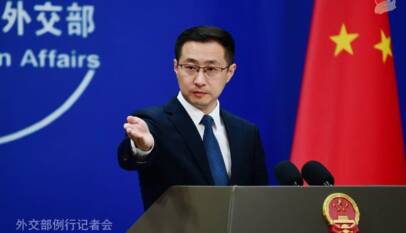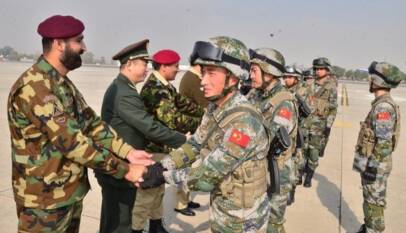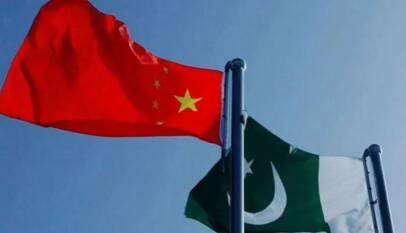China is committed to defend its geopolitical goals
The current conflict between Indian and Chinese troops in Ladakh and North Sikkim and India’s illegally constructed Indian defence facilities across the Chinese side of the Galwan Valley region could be used to threaten GB and the Karakoram Highway, an important part of CPEC, a flagship project of BRI. Since CPEC has contributed to the socio-economic development of Pakistan, the bilateral cooperation is proving to be a thorn in India’s side. Despite US policy of China’s containment and Indian opposition to CPEC, China and Pakistan are committed to secure its geopolitical interests under CPEC.
After the recent skirmishes between Indian and Chinese troops in Ladakh and North Sikkim, Chinese troops moved into sensitive areas along the eastern Ladakh border that India claims to be its territory.
The point of contention is the illegally constructed Indian defence facilities across the Chinese side of the Galwan Valley region. These facilities could also be used to threaten G-B and the Karakoram Highway that connects CPEC to China. Given India’s illegal claim on G-B and AJK, it is quite obviously a planned move by New Delhi.
Emboldened by the lukewarm US and western response to revocation of Article 370, the subsequent lockdown and continued human rights violations in IOK, the RSS-BJP combine is shaking the status quo over contentious issues.
Accordingly, the rollback of Article 370 has been followed by the controversial citizenship law, the judgment on the Ayodhya Ram Mandir dispute in favour of Hindu fundamentalists, the killing of Muslims in February and reigniting of border disputes.
Earlier this month, Nepal strongly protested to India over the inauguration of a road in a disputed territory that will serve as the shortest route between New Delhi and a Hindu pilgrimage site in the Tibetan plateau — again provoking Beijing.
The border between China and India is not demarcated and skirmishes are nothing new along the Line of Actual Control (LAC). The latest friction however needs to be seen within the context of India’s growing unease with CPEC and the rise of China as a challenger to the US.
India is uncomfortable with the growing regional Chinese influence. With a GDP of around $14 trillion China’s economic development dwarfs India’s whose GDP is less than $2.7 trillion. India’s dream of becoming a global power is far behind China’s.
Although India’s economic relations with China have expanded, Beijing-Islamabad cooperation over CPEC is proving to be a thorn in India’s side.
New Delhi is frustrated because its traditional maritime strategy against China has been seriously undermined by CPEC that provides Beijing an alternate route to the Indian Ocean. CPEC also has the potential to replenish Pakistan’s economy and secure Balochistan, while undermining India’s hybrid war in Pakistan.
In its wariness of China, New Delhi has found a soulmate in the White House. The US future defence strategy is overtly aimed at curtailing China’s rise, and undermining BRI is definitely part of the strategy. The joint American-Indian frowning down on CPEC is therefore not difficult to fathom.
Unsurprisingly, Alice Wells continues to beat the anti-CPEC drum as if Pakistan’s economy — that she fears may fall into ‘the Chinese debt-trap’ — was linked to US national security.
According to an internal report presented by China’s Ministry of State Security, the US views China as an economic and security threat and is determined to undermine the ruling Communist Party.
The report’s findings cannot be dismissed. In the intensifying rivalry with China, Trump is targeting Beijing at every opportunity.
It’s no coincidence that President Tsai Ing-wen of Taiwan has offered support to Hong Kong against China. Although Washington has no official relations with Taipei, Trump is increasingly backing Taiwan with arms sales and legislation to bolster it against China.
Beijing blames unrest in Hong Kong on secessionist forces and foreign influence. While political unrest is multi-faceted, let’s not forget there is a long history of Western powers’ meddling in China. Beijing’s suspicion therefore has historical context.
Impervious to history, Pompeo sees ‘freedom and liberty’ under threat in Hong Kong. This sounds hollow when one finds Pompeo’s approach to IOK and Palestine downright criminal.
Coming back to Ladakh, the US has supported New Delhi’s position in the border standoff. The Indian dream of severing CPEC resonates with the American dream to undermine BRI.
It is therefore not surprising that China’s action in Ladakh is stronger than usual — a message to Modi and his strategic partner in the White House that Beijing is ready to defend its geopolitical goals at all costs. And so is Pakistan.
Chinese Ambassador highlights significance of Third Plenary Session for China-Pakistan cooperation
The Third Plenary Session of the 20th Central Committee of the Communist Party of China ha…













